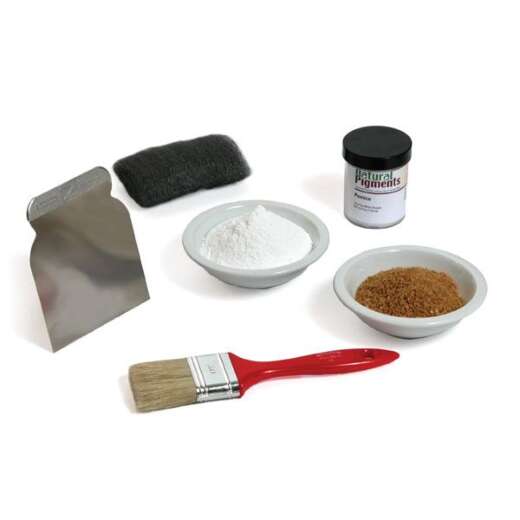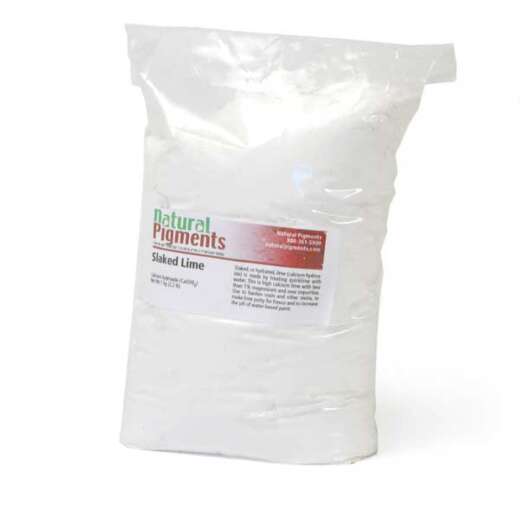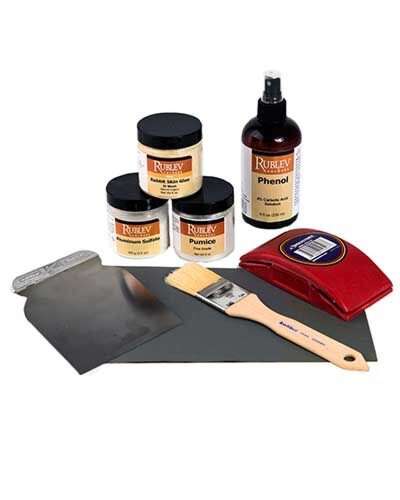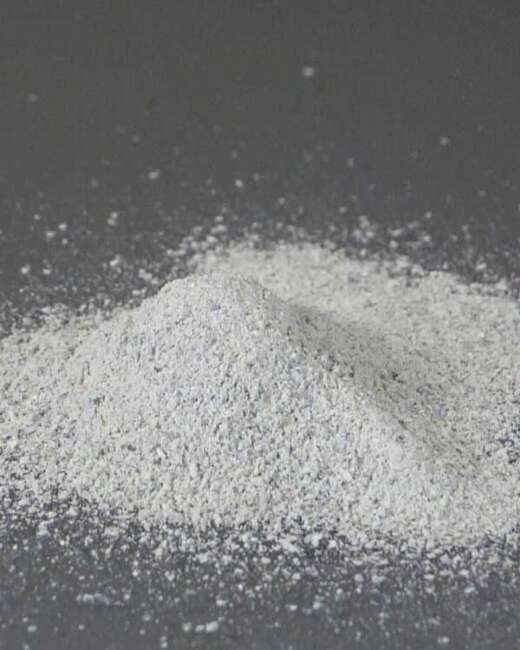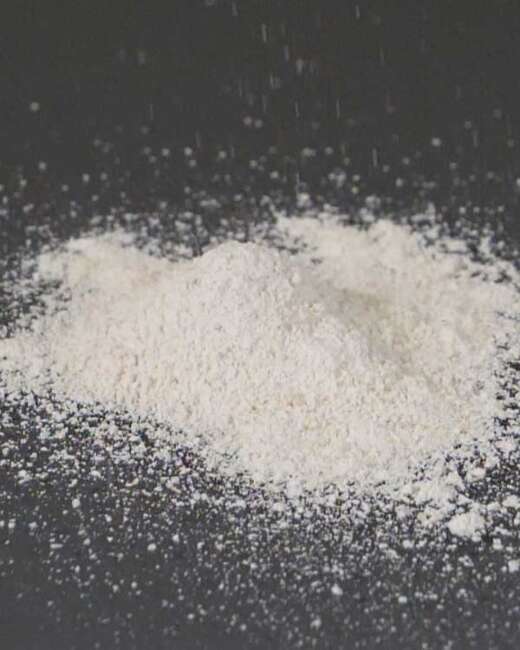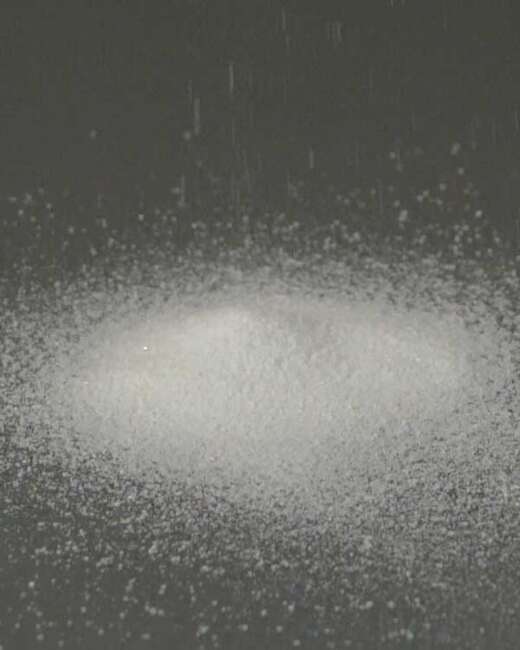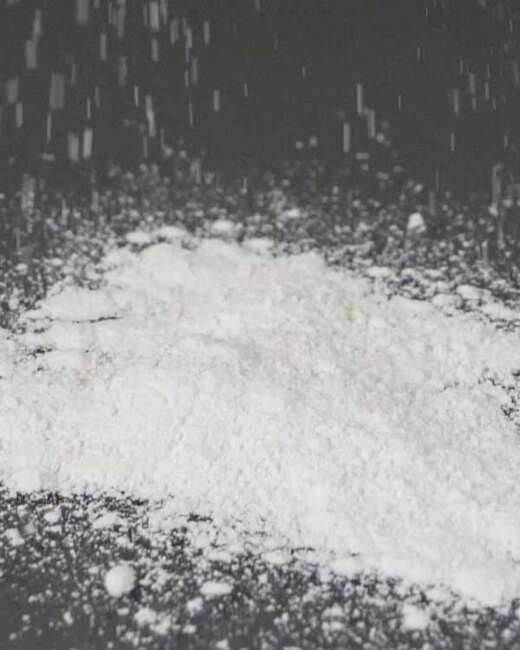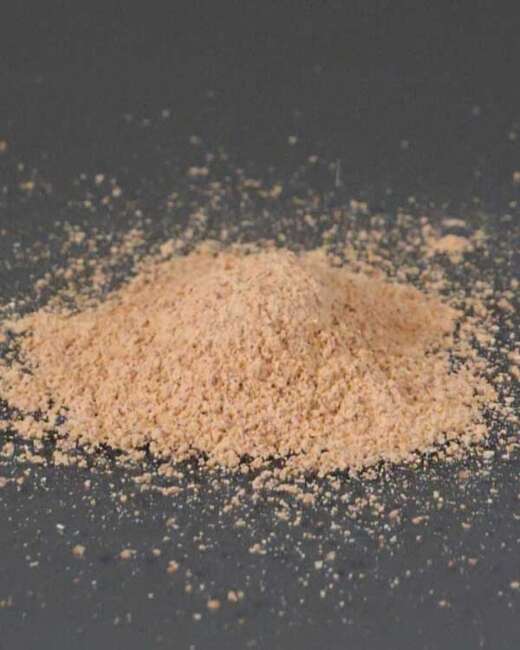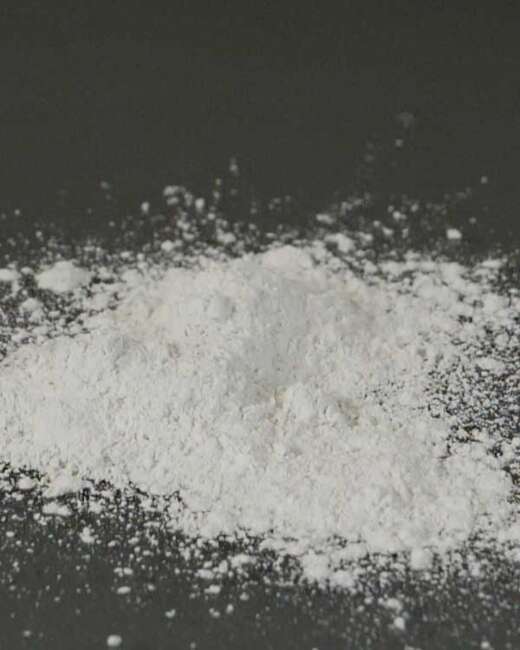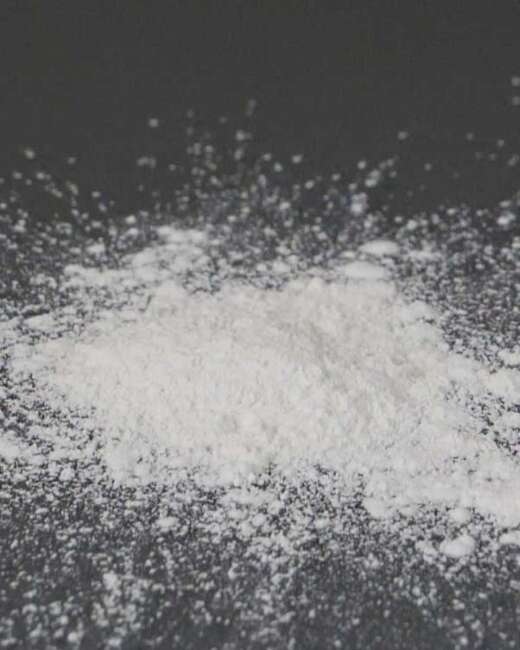Preparing Wood Panels for Painting

Part One
Part one on preparing wood panels for painting with the application of chalk grounds and fifth in our technical series on painting icons, this article discusses the history and materials used in the preparation of wood panels for tempera painting—size, pavoloka, and gesso—since the earliest period of Christian art until today. While the series specifically applies to making icon boards and preparing them for painting egg tempera icons, it has application to preparing wood panels for painting in any medium on chalk grounds.
The installation of braces and the shaping of the kovcheg (recessed areas on icon boards) are the last stages in the production of an icon board. However, the board is not yet ready for painting. The paint layer is applied to a ground consisting of powdered chalk or gypsum and glue, called gesso (Italian for gypsum) or levkas (Russian: левкас). Sizing the board and applying the pavoloka (Russian: паволока) precedes the application of the ground. Impregnating the painting board’s surface with hot, liquid glue is called ‘sizing.’ Pavoloka is a loosely woven cloth glued on top of the size.
The method and application of pavoloka has changed over time, but the changes did not occur with any regularity; therefore, determining the time of the writing of an icon cannot be made accurately based solely on the attributes of the pavoloka. Furthermore, conclusions founded on the condition of the pavoloka can only be drawn when part of the ground is absent therefore making the pavoloka visible.
Most ancient icons have pavoloka glued over the entire front surface of the board. Later, in the 16th and 17th centuries, we find pavoloka partially covering the panel’s surface. In these cases, the cloth was glued over the joints of boards, cracks, and holes remaining from knots in the wood. Much later, icons were made without any pavoloka, and the gesso was laid directly onto the sized board. This simplification in preparing the ground was characteristic of icon panels made by icon-painting artels (Russian for painting workshops) in Old Rus’. However, many masters remained true to ancient traditions; therefore, many icons made in the 15th through 18th centuries were executed in strict observance of all the requirements of the icon-painting canon. For this reason, the presence or the absence of pavoloka does not serve as weighty proof in determining the time of the writing of an icon.
Before we discuss the steps of sizing the board and gluing pavoloka, let us review the history and method of preparing the board for the ground. From the description of the steps to prepare an icon board, it is evident that this work is relatively complex and must be carried out by a qualified master. It is possible to say the same about sizing the board, gluing the pavoloka, and applying the gesso. Besides their complexity, the steps must follow a strict order of execution and precisely observe the proportions of ingredients (i.e., glue concentration, the ratio of the gesso components, etc.).
Why did ancient painters choose a method that requires a high degree of knowledge and skill? When icons first appeared in Palestine, Egypt, and Syria during the third and fourth centuries, tempera painting was widely used for panel paintings, and an underpainting, consisting of size, pavoloka, and chalk grounds, was already considered traditional. Thus, for instance, in Egypt, more than 3,000 years before the birth of Christ, many sarcophagi were made of wood covered with cloth glued to the surface, given a ground layer, and decorated using tempera paints. It is worth noting that the ingredients of the ground used 5,000 years ago scarcely differs from that of gesso used in icon painting today. Egyptian sarcophagi were already considered ancient artifacts in Christianity’s early centuries. Undoubtedly, the first Christian painters were convinced of the reliability and longevity of such works created with this painting technology. The sacredness of icon painting requires using reliable materials and techniques; therefore, ancient painters chose as the basis for their icons wood panels sized with animal glue and covered with pavoloka and gesso. Paintings executed on this basis would be capable of being preserved not a hundred years but thousands. The first painters were convinced of this based on the example of ancient Egyptian sarcophagi, just as we can be confident of the longevity of this painting technology based on the example of ancient icons.
Considerably later, when oil paint came into wide use during the 15th and 16th centuries, icon paintings continued to be written on wood panels with white gesso or chalk. Even as oil paints gradually displaced tempera painting, the composition of the ground at first changed little. Changes consisted of adding drying oil to the ground if the painting was to be produced in oil paints. Later, when tempera was all but excluded from painting, icons began to be written using oil painting techniques and, similar to secular pictures, on linen canvases.
Essential Ingredients for Size, Pavoloka, and Gesso
Before embarking on a detailed description of sizing and gluing the pavoloka, it is necessary to review in detail the materials used. The primary material used in all stages of preparing the underpainting is glue. The board is saturated with a weak dilution of hot, liquid glue when sizing. When gluing pavoloka, a stronger concentration of glue is used. The very same concentration of glue is the primary binding material for gesso.
Size of Animal Collagen Glue
Animal glue is one of the first adhesives used by humankind. The primary adhesive substance of glue is the product of the hydrolysis of collagen — the protein substance contained in the tissues of living organisms. Collagen is an insoluble fibrous protein that occurs in vertebrates as the primary constituent of connective tissue fibrils and bones and yields gelatin and glue on prolonged heating with water.
Glue primarily consists of gelatin, but the collagen from which gelatin or glue is prepared is invariably associated with other protein materials such as keratin, elastin, mucin, chondrin, etc., in addition to non-protein, organic material, and inorganic salts that may or may not remain in the glue. Glue and gelatin merge into one another by imperceptible degrees. The difference is one of purity: the more impure form is called glue and is used only as an adhesive; the purer form, termed gelatin or size, is used when a perfect adhesive or medium is required.
Glue is an organic colloidal substance of varying appearance, chemical composition, and physical properties. It occurs in commerce in a wide variety of forms and colors. The colors range from all shades of white, yellow, and brown, and the glue may be transparent, translucent, or opaque. Gelatin or glue-forming tissues occur in all animals’ bones, skins, and intestines. These agglutinating materials are extracted with hot water, and the solution yields a jelly-like substance—gelatin or glue- on evaporation and cooling. Glue is also prepared from fish bones, skins, or bladders that give impure forms of bone gelatin, skin gelatin, and isinglass.
The technique of making the different varieties of glue is practically identical. The differences lay only in the methods of purifying the end product and some special features of treating the raw material. Extracting glue from animal tissues involves heating the raw material in water. Upon heating in water, collagen is hydrolyzed, forming a gelatinous substance that absorbs water to make a viscous solution with strong adhesive properties. The temperature of the solution must not exceed 70° to 80° C. (158° to 176° F.); otherwise, the protein molecules are destroyed, and the glue loses its adhesive properties.
When the glue is soaked for some time in cold water, it softens and swells without dissolving and, when again dried, resumes its original properties. When gently heated, it dissolves entirely in water, forming a thick, syrupy liquid with a characteristic but not disagreeable odor. Remelted glue is not as strong as freshly prepared, and newly made glue is inferior to the glue that has been in stock for some time. Glue losses strength continuously under the action of heat, and it is better to heat successive small amounts rather than to have a large pot cooking for a relatively long period. All glue solutions decompose with time and lose their adhesive power.
Fish glue is impure gelatin prepared from fish heads, bones, and skins. The pure gelatin from fish bladders is known as isinglass. Glue made from the skins is the clearest and best. Usually, fish glue is marketed in liquid form, but it can sometimes be obtained in the form of cakes or broken sheets that are hygroscopic and readily soluble in water. As a liquid, it contains a preservative and sometimes an essential oil to mask the odor. Fish glue is considered inferior to animal glue as an adhesive and is more easily spoiled by bacteria.
Isinglass is pure fish gelatin from the swim bladders of a limited number of fish, chiefly the sturgeon, which is the primary source of Russian isinglass. North American isinglass comes mainly from the hake and sometimes from the cod. It is nearly pure collagen. When soaked in cold water, it swells without losing its organized, fibrous, thread-like structure, but boiling converts it to gelatin, which, probably because of its formation, yields a firm jelly.
Of the many kinds of glue available, the best properties are found in Sturgeon isinglass and rabbit skin glue. Isinglass is practically colorless, possesses significant adhesive strength, and yet preserves its elasticity, which is very important.
There are several varieties of glue made from mammals, each of which has its name, such as rabbit skin, painter, hide, and joiner glue. All these varieties are different in elasticity, adhering strength, and color. Processing rabbits’ bones, tendons, and skins yield rabbit skin glue, considered the best glue for gesso.
Next in quality is hide glue from the hides of almost any animal but primarily from cattle. This is simply because of the abundance of cattle hides due to the enormous worldwide consumption of beef and subsequent tanning of hides for leather. The trimmed hide pieces (too small or irregular shapes to provide useable leather) are shipped to the hide glue plant.
Of lesser quality to make gesso is fish glue and gelatin. Fish glue is similar to sturgeon isinglass, but it is prepared from fish heads, scales, and bones. Fish glue is somewhat inferior compared with sturgeon because of its weaker adhesive strength and darker color, which can negatively affect the color of the gesso.
There are two grades of gelatin: food and technical. According to their adhesive strength, both varieties are inferior to sturgeon and skin glues, and only the technical grade can be used in gesso. For example, Knox Gelatin®, available from supermarkets in the U.S., is food-grade gelatin but is not made from animal hides. It is made from rendering cattle bones. That means it is comprised of edible light proteins, which, in turn, do not make suitable adhesives. Granted, it has been rendered “pure” edible grade gelatin and, as such, retains a minimal amount of fat. These fats go rancid and cause the glue to stink as mold spores from the air begin to multiply in it.
All hide glue contains some fat. It comes with the product — even technical grades. To test a sample for fat, sprinkle a pinch of lye (sodium hydroxide or potassium hydroxide) into your gluepot — the fats are saponified and precipitate to the bottom. Animal hides contain the heavy-molecular proteins required for glue.
Icon painters of all epochs preferred to use skin glue, that is, glue obtained by processing the skins of animals. Good results can be had when using sturgeon and fish glue; however, you must strictly observe the ratio of the glue to water. Cracks can form in the gesso when the ratio of glue to water is not carefully followed.
In ancient times, painters prepared the glue themselves. Naturally, this glue was inferior in quality compared to present-day glues prepared with more technologically effective and better-purifying methods. Today, it is not difficult to buy high-quality glue. However, it is worthwhile to consider how it was prepared since times of antiquity. One standard method is described in the book Painters Manual or Hermeneia of Dionysius of Fourna, an icon painter of the 18th century:
On the Making of Animal Collagen Glue
When you wish to make some glue, do thus: take some limed skins and put them into lukewarm water to soak right through; wash and clean all the flesh tissue and dirt off them, and put them in clean water in a copper vessel to boil. Watch for when they come to the boil and begin to thicken, and strain off either with a woven strainer or a cloth; otherwise, they will burn, and then put in more water; repeat this two or three times, straining off until they are completely dissolved. If you cannot find limed skins, use unlimed ones, choosing the skin from the feet or ears of oxen and any skins that cannot be put to any other use or are of little value. If they are thick, it does not matter; buffaloes and ewes are also good. Deal with them thus: take some quick-lime and put it into a pestle with some water and mix it until it is all dissolved; put the skins in this solution and leave them for a week, until every single hair has come off them. Take them out, wash and clean them thoroughly and let them dry. Whenever you want to make glue, do as we have written above for you. But if you are in a hurry and have no lime, to soften the unlimed skins, soak them and then put them on to boil for a short time; take them out and clean them well of any fat and flesh tissues and cut them up in a chopper so that they will be boiled more quickly; do not separate the pieces, but leave them joined together so that you will not be hindered when you come to strain them off. Boiling the skins like this, you will obtain some glue. If you want to dry the glue, put the last of the glue alone on a low fire and let it boil until it thickens. Only watch it well as it may froth up a lot, and you must therefore be present when it is boiling so that when it froths up, you can take it off the fire and put it in a vessel of cold water so that it touches the bottom to stop it rising. Please put it back several times onto the fire until it thickens, and then take it off and leave it to cool. Stretch a piece of string in a bow-saw, cut them into small pieces, and leave them on a board for two or three days until they begin to harden; then pass a string through them and hang them up in the air to dry completely, and keep them for when you want to lay gesso. See that you always prepare glue in cold weather, as it smells if the weather is hot, and you will not make such good progress. (Dionysius, 1974)
This method of preparing glue was used up to the beginning of the 19th century, and in some places even later. Since that time, the glue has been produced industrially.
The modern glue manufacturing process follows this procedure:
- Wash hides and bones to remove dirt;
- Soak in limewater for 60 to 90 days;
- Wash to remove hair and lime;
- Neutralize with acid, drain, wash, and drain again;
- Add the raw material to water, heat to 45-50° C. (110-120° F.) for two to four hours (called an extraction);
- Drain off the dilute glue solution, evaporate, chill, dry, and grind the resulting solids;
- Repeat the last two steps three to four times to extract all of the glue from the hides and bones with the temperature increased (20-25° F.) each time.
It is not worthwhile for an artist to try making glue using ancient techniques, such as the method described by Dionysius. The quality of this glue will be considerably lower than the quality of glues prepared industrially, and using inferior quality glue can create problems in the final product, such as scaling, formations of cracks, and the like.
Pavoloka—Fabric Covering of Wood Panel
The word pavoloka originates from Russian words meaning to envelop and to drag, which indicate the method of its use; covering an icon board with a cloth. Pavoloka is cloth with open weave threads that strengthen the bond between the gesso and the board. Furthermore, if the board should warp or split, pavoloka, in most cases, may prevent the ground from failing. There are known examples of icons where a section of gesso became completely loosened from the warped board. Still, because of pavoloka the front surface of the ground containing the painted image remained intact.
In medieval Rus’ scraps of cloth were used for pavoloka, but these were durable fabrics. In the 14th to 16th centuries, a fabric made from flax was used for pavoloka. At the end of the 18th and the beginning of the 19th centuries, instead of cloth pavoloka, frequently a low-quality paper was used. By the second half of the 19th century, a fabric made from cotton was used. At this time, icon painters began to use sarp cloth. Sarp cloth resembles contemporary gauze (a thin, loosely woven, and often transparent fabric) — the difference between them was that sarp cloth had somewhat thicker threads, and the spacing between threads was greater. Sarp cloth was primarily stretched over the timbered walls of dwellings as a preparatory surface for wallpaper.
Today, one could use medical gauze for pavoloka. Another choice is coarse muslin (from Italian mussolina, Arabic mawsiliy, al-Mawsil Mosul, Iraq), a plain-woven sheer to coarse cotton fabric. Linen gauze is the best choice overall for pavoloka. Linen absorbs water well. The structure of its fibers is hollow, much like bamboo. Water is soaked up in the center of the fiber, so the fabric does not feel wet. That is why a linen dishtowel will dry more dishes or glasses than any other fiber.
The critical thing to remember when selecting fabric for pavoloka is that the spacing between the threads of the cloth should not be less than 0.5 mm; otherwise, the pavoloka will not serve its primary function.
Let’s consider the function of pavoloka in greater detail. Pavoloka is glued onto a sized board. The glue penetrates the upper layers of the wood panel. It forms a thin layer (0.2–0.5 mm thick) over the surface of the pavoloka, penetrating both the softened layer of glue on the board’s surface and the cloth impregnated with glue, resulting in a strong mechanical bond between the board and the ground. Hot glue also makes a chemical bond with natural fibers in pavoloka. (There is even a grade of glue that will bond to the glass.) The weaker the glue’s gram strength, the slower it usually tends to set up, and the wider tolerance it has for different materials and longer adjusting times.
Painters also use a rubbing-in technique to increase the strength of the bond between the gesso and the board. The painter rubs the gesso into the pavoloka by hand to uniformly fill the cells of the pavoloka. When rubbing, the friction from the hand softens the underlying glue permeating the pavoloka. Since this softening occurs unevenly, some areas of the gesso penetrate under the pavoloka, and in other areas, the gesso remains only in the upper layer of the cloth. As a result, individual parts of pavoloka are covered entirely by gesso, while other parts remain in the glue on the surface of the pavoloka. Therefore, besides bonding the ground to the glue on the surface of the board, it also forms a mechanical bond due to the threads of the pavoloka (Fig. 1). Specifically, for this reason, closely woven cloth is not suitable for use as pavoloka.
Inert Fillers
An inert white filler is used in gesso to provide a brilliant white surface for painting. The most commonly used materials are calcium carbonate (chalk or whiting) and calcium sulfate (gypsum). Since antiquity and throughout the middle ages, the ground’s most frequently used inert ingredient was gypsum or alabaster. There are many references to these materials in Byzantine and Greek manuscripts. In the Painters Manual, Dionysius prescribes gypsum as the inert filler for gesso. However, the majority of painters in Russia used chalk. Chalk grounds are characterized by their brilliant whiteness and the visual effect of chromatic depth created when light passing through layers of paint is reflected from the ground’s surface. Furthermore, as practice shows, chalk gesso is more resistant to the unfavorable actions of the environment.
The different forms of calcium carbonate used in painting grounds are chalk, marble, and limestone. Calcium carbonate is graded based on its white color. The whiter it is, the better the grade. Quarried chalk is ground under water, and the product is washed and allowed to settle in large vats. Maximilian Toch reported that the top layer nearest the surface is dried, bulked, and sold as “Paris White,” which was the finest and whitest product available at the time. The successive layers are sold under the name “Extra Gilders White,” and the bottom layer, known as “Commercial White,” is used for making glaziers putty. (Toch, 1925)
Next in line is marble dust. Marble is metamorphosed limestone that is recrystallized calcite in which the calcite grain size may be reasonably coarse as in lump sugar. (Ashok, 1993) According to Toch, in the late 19th century, the best grades were “Extra White Italian,” very fine dust that resembles white flour, and “Extra Fine.” Today, there are numerous grades of marble dust available.
Using artificially precipitated chalk as an ingredient in grounds is not recommended. Also, some modern fillers may be excessively alkaline, and pinholes may appear on the surface after applying paint to grounds made with these materials, making further work difficult.
![]()
Fig. 1. Cross section of a painting panel with a ground layer of size, fabric (pavoloka), and chalk ground (levkas).
Today, one can purchase prepared natural calcium carbonate (calcite) in powder form. Usually, this whiting is pure, but if there are any impurities in it, such as sand, inorganic salts, or carbon, it is possible to remove them. The method of cleaning is called elutriation. For this, you will need two large bowls. In one of them, pour the powdered chalk, filling it to approximately a third of its volume. Pour water into this bowl covering the chalk, and then stir this mixture vigorously. Pour off the water into the second bowl before the chalk settles and the water becomes clear. The heavier particles settle on the bottom of the bowl, while lighter particles float to the surface. You may further strain the water as you pour it off into the second bowl through muslin. After the chalk has completely settled to the bottom of the first bowl, add more water and repeat the process. Repeat these steps until you have only debris and sand remaining on the bottom of the first bowl, after which you can discard it and wash out the bowl.
Now add water to the contents of the second bowl, stir vigorously as you did in the first, and pour off the water into the other bowl. Repeat this process to the contents of the first bowl until you have only debris and sand at the bottom of the second bowl. The first bowl now should contain relatively pure chalk mixed with water. Allow the contents of this bowl to stand for 24 hours, after which you can pour off the clear water from the bowl. Remove the chalk from the bowl and let it dry on a flat pan in a warm room.
Tools Required to Prepare the Ground
A spatula is one of the essential tools required to prepare a panel for painting. A metal or plastic spatula can be used, but plastic is sometimes preferable since metal can leave rust in the gesso. The blade should be made from stainless steel if it is more convenient to use a metal spatula. You may use a plastic rubber spatula, but the blade should not be too flexible.
Some painters apply the first layer of gesso with a spatula and follow it with subsequent layers applied by a wide brush. In this case, a brush with rigid hair, such as hog bristles, should be selected. However, applying all layers of gesso with a spatula is preferable because a brush more easily creates air bubbles in the gesso. Air bubbles are difficult to remove from the surface of the ground and give it a dull appearance. This is undesirable because as the paint is applied to this surface, the pinholes become more apparent, giving the surface an uneven appearance. When the icon is coated with olipha or varnish, tiny air bubbles appear in these places, which are very difficult to eliminate.
To level off the surface of the gesso, it is necessary to use a putty knife. Usually, a stainless steel blade is sharpened, and the corners rounded for this purpose. A straight edge with rounded corners is this tool’s only requirement. This is so that scrapes and indentations will not remain on the surface of gesso.
Many painters level the surface of the ground with the aid of pumice. Pumice stone in the form of long white blocks is best. The pumice stone should not be much larger than a matchbox. Smaller pieces can be used to make corrections in erroneously drawn lines of prorisi. The surface of the pumice stone must be even, which can be done by rubbing two pieces against each other. Select only the whitest pumice stones since colored stones and stones with impurities can leave a deposit, coloring the ground.

Fig. 2. Gluepot.

Fig. 3. Double boiler.
To prepare the glue, you will need a gluepot (Fig. 2) or a double boiler (Fig. 3). Glue should be gently and evenly heated in a container in a water bath. You can adapt a stock pot and a tall can to achieve roughly the same effect. The can is placed inside the pot, filled with enough water but not so much to cover the can.
Besides these tools, you may require others. It all depends on how you prepare the board for painting. In the next article, we will describe additional tools and a detailed description of preparing the panel.
Bibliography
Alpatov, M. B., Early Russian Icon Painting, Moscow: Iskusstvo Publishers, 1974.
Ashok, Roy, Artists Pigments: A Handbook of Their History and Characteristics, Vol. 2, Washington, D.C.: National Gallery of Art, 1993, p. 203-205.
Dionysius, of Fourna, Paul Hetherington, trans., The Painters Manual of Dionysius of Fourna, Sagittarius Press, London, 1974.
Ramos-Poqui, Guillem, The Technique of Icon Painting, Search Press Ltd. and Burns & Oates Ltd., Tunbridge Wells, Kent, 1990.
Rice, David and Tamara Talbot, Icons and Their Dating: A Comprehensive Study of Their Chronology and Provenance, London: Thames and Hudson Ltd., 1974.
Toch, Maximilian, The Chemistry and Technology of Paints, New York: D. Van Nostrand and Co., 1925, p. 131.



